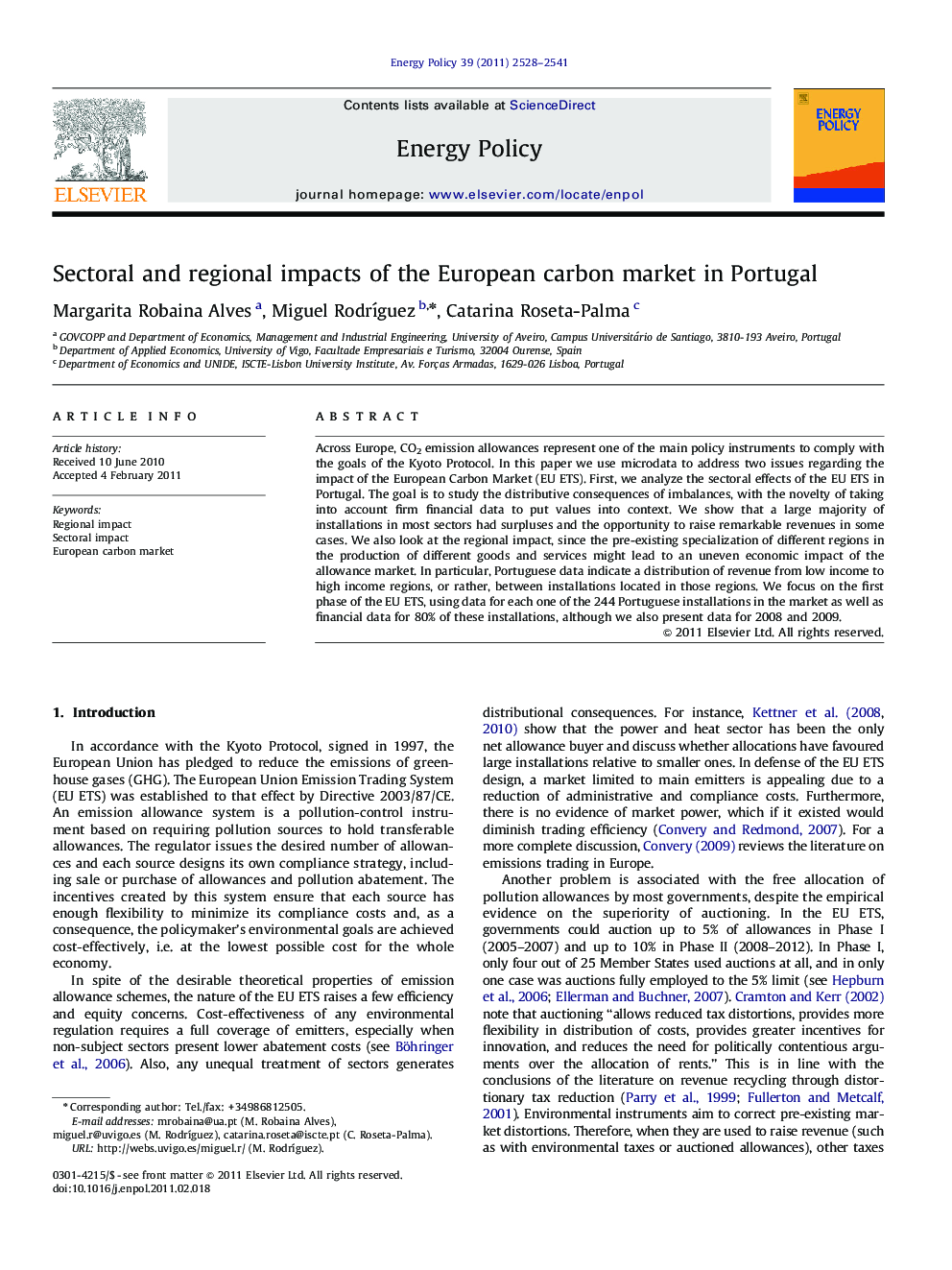| Article ID | Journal | Published Year | Pages | File Type |
|---|---|---|---|---|
| 995876 | Energy Policy | 2011 | 14 Pages |
Across Europe, CO2 emission allowances represent one of the main policy instruments to comply with the goals of the Kyoto Protocol. In this paper we use microdata to address two issues regarding the impact of the European Carbon Market (EU ETS). First, we analyze the sectoral effects of the EU ETS in Portugal. The goal is to study the distributive consequences of imbalances, with the novelty of taking into account firm financial data to put values into context. We show that a large majority of installations in most sectors had surpluses and the opportunity to raise remarkable revenues in some cases. We also look at the regional impact, since the pre-existing specialization of different regions in the production of different goods and services might lead to an uneven economic impact of the allowance market. In particular, Portuguese data indicate a distribution of revenue from low income to high income regions, or rather, between installations located in those regions. We focus on the first phase of the EU ETS, using data for each one of the 244 Portuguese installations in the market as well as financial data for 80% of these installations, although we also present data for 2008 and 2009.
Research highlights► Analysis of distributional impact of the EU ETS for Portuguese sectors and regions. ► EU ETS microdata, economic data and firm financial data used to provide context. ► Most installations had surpluses and in some cases may have raised notable revenues. ► There seems to be an income distribution effect from low to high-income regions. ► Thermoelectric generation most likely to be short, but results vary with rainfall.
